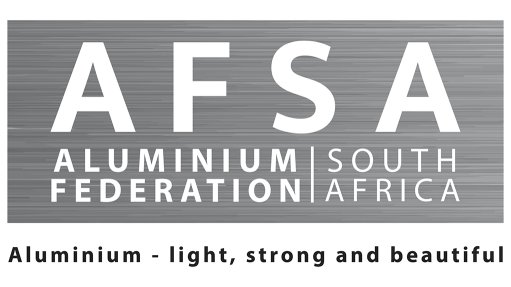Flow-through must not only incentivise exploration but also market participation – Miller


Mining supply sales consultancy AmaranthCX director Paul Miller
Photo by Creamer Media
JOHANNESBURG (miningweekly.com) – A flow-through share scheme tax incentive, currently under consideration for South Africa, must serve to incentivise not only exploration but also public listed market development and market participation by a diversity of investors.
Mining supply sales consultancy AmaranthCX director Paul Miller emphasised this viewpoint in an emailed response to a Mining Weekly request for his comment on South Africa’s Canada-emulating flow-through share model, which has received an initial tentative nod of official approval.
Miller propounded holistic incentivisation embracing, as it does in Canada:
- comprehensive stock exchange involvement;
- the imposition of national instrument (NI) mineral project disclosure standards;
- the implementation of system electronic document analysis and retrieval (SEDAR) that reports securities-related information;
- the availability of pre-competitive geological data;
- the curation and re-use of competitive geological data; and
- setting up of proper prospecting administration.
“Let’s not miss the point, the Canadian flow-through shares are liquid, listed instruments and the tax incentive must serve to incentivise exploration as well as – and I can't emphasise this enough – public listed market development and market participation by a diversity of investors,” reiterated Miller, who formerly led the JSE-listed coal exploration and development company Keaton Energy, and advised many mining entities in his former capacities as Nedbank CIB mining finance principal and as MD of the CCP 12J startup, which specialised in the financing of secondary and ancillary projects on existing mines.
“The Canadian success was not only about geologists in the field, drills turning and new discoveries made, it was also about the total support ecosystem – the Bay Street financiers and stockbrokers, direct retail participation in the Toronto Stock Exchange (TSX) and the TSX-Venture Exchange, the NI 43-101 standards and the SEDAR reporting requirements, availability of pre-competitive geological data, curation and re-use of competitive geological data, and proper administration of prospecting rights, meaning that they are turned over regularly,” Miller stated.
The introduction of a flow-through share scheme in South Africa had been recommended well ahead of Section 12J of the Income Tax Act, which has been a failure from the point of view the minerals exploration it was intended to incentivise. South Africa is now closer to finally introducing a flow-through share scheme following discussions involving Minerals Council South Africa, the Department of Minerals Resources and Energy (DMRE) and the South African Revenue Service and National Treasury.
“Section 12J never even got out of the starting blocks as an incentive for minerals exploration. Even we at CCP 12J were looking to invest only on existing mining sites. Too many restrictions, that changed too often and with little warning, made 12J a 12-year waste of time for minerals exploration,” Miller added.
“It appears to me that National Treasury simply does not want individuals to manage share portfolios directly, or participate directly in public markets. We can see this in how Tax Free Savings Accounts and the Section 12J incentive were designed. It is as if the rent-seeking large members of ASISA – the Association of Savings and Investment of South Africa – have somehow captured the policy making process in order to force most savers to pay exorbitant fees to a few highly concentrated asset managers.
“I suspect listed flow-through shares would be inimical to the interests of ASISA's members, as it would incentivise individual investors to open stock broking accounts directly.
“So the mining industry and the DMRE can all get excited, but the National Treasury controls tax policy development and I can't see listed, liquid, flow-through shares, leading to increased direct participation in public markets, being in ASISA members' interests.
“Also, this debate is moot without the DMRE embracing transparency and fairness, where the rules are applied equally to all parties. The absence of an open and accessible mining cadastre is a case in point.
“Furthermore, the DMRE collects no statistics on exploration after prospecting rights are granted. They don't even publish how many prospecting rights are in issue, unless the Minister is asked a parliamentary question.
“In successful countries, statistics are regularly published of metres drilled and dollars spent, for example. These statistics are considered a crucial leading economic indicator and a strong indicator of the overall health of the mining industry.
“The DMRE no longer appears to generate any meaningful knowledge or publish anything more than cursory statistics. The Hazenile debacle shows that the DMRE itself relies on Google searches for its own information,” said Miller.
Hazenile is a reference to the gaffe of the official promotion of the non-existent Hazenile opportunity during an address to investors at the Africa Downunder mining conference in Australia.
Other points that Miller believes are also required include:
- the free availability of pre-competitive data generation, such as regional mapping and geophysical surveys;
- the quicker turnover of prospecting rights with the competitive data generated submitted to the Council for Geoscience and then made available free to later applicants;
- the elimination of the many prospective areas that are held dormant or are "hoarded" owing to inept prospecting rights management by the DMRE; and
- easier access to prospecting rights with the quicker return of these rights when no work is done so that the next party can be given a go.
“Our prospecting rights are held for too long with no actual work being done. If prospecting right holders do not have the money, they should have a very limited time to raise it and start working or else it must be relinquished,” said Miller, who expressed concern about the DMRE having no statistics on South African exploration spending itself.
"S&P stats are not without their own problems – and are best used to make relative comparisons over time rather than the absolute number. Perhaps you could ask the DMRE for some statistics on exploration, any statistics at all such as the number of prospecting rights granted a year perhaps or the funds spent a year on rights. They will say financial information is confidential, and is all collected from prospecting right holders annually. Nonsense. If they had the data they could report at an aggregated level at least,” Miller argued.
PROJECTS TO CREATE TAX-PAYING JOBS
As reported by Mining Weekly last month, venture capital incubation fund initiator Pearl Gray Equity Partners is targeting South Africa’s small-scale gold mining space.
A reform of the Gray Family trust created in the late 1990s, Pearl Gray is a family investment firm based in Pretoria, with activities in Delaware, in the US.
It wants to partner operational mining companies and eventually provide these companies access to capital and positive direction.
“We’re going to have skin in the game as well. So, what we’re essentially doing is working with small-scale mining companies using a bit of our money and being nimble in a way where we are going to source additional funds as well,” Pearl Gray Equity Partners managing partner Steve Booyens told Mining Weekly in a Zoom interview.
Asked to comment on the momentum being gained by the flow-though share scheme concept, Booyens stated: “It would be exciting and it will obviously stimulate exploration fundraising. One thing worth noting is that it will be heavily reliant on mutual funds and the so-called 'heavy hitters'. Will it be within their mandate to risk positions in flow throughs, which consists of companies who are, as the name says, 'exploring'?
“I'm still unsure of it in the near-term considering the current risk-off environment. Longer-term, I think diversification products will be created within flow-through investments and as we see a more risk-on approach it should be beneficial to investors who're looking for high-yielding tax-efficient investments, junior mining companies as well as our government, as these projects will contribute significantly to GDP and create tax-paying jobs,” said Booyens.
INTENSIVE DISCUSSION
Intensive discussion has reportedly been under way with the Council for Geoscience and the DMRE, whose director-general Advocate Thabo Mokoena earlier this month pledged at the Joburg Indaba that a comprehensive exploration strategy would be developed in the next three months.
In addition, Mineral Resources and Energy Minister Gwede Mantashe has set a target for South Africa to attract 3% to 5% of global exploration dollars within the next five years. Without an efficient tax incentive system in place this will not be possible, whereas when a discovery is made that leads to the development of a mining project, this has a positive impact across the fiscus as well as on job creation.
Minerals Council South Africa junior and emerging miners leadership forum chairperson Errol Smart reported this month that a South African-tailored flow-through share model drawn up with the help of four authoritative South African legal tax accounting concerns had drawn an initial tentative nod of approval from the South African Revenue Service (SARS).
The basic concept of the flow-through share model is that the exploration expenditure of the operating company is foregone in favour of the investor.
In the case of a corporate investor investing the R1-million in an explorer’s flow-through shares, SARS would forego 28%, or R280 000, in tax, and get the R280 000 back by the exploration company foregoing its right to deduct such expenditure to the extent that the expenditure has been renounced. In the case of an individual investor, SARS would forego 45%, or R450 000, and get that R450 000 back when the exploration company began profiting.
What the proposed flow-through share model does is create a contract between the exploration company, the taxpayer wanting to invest and SARS.
Minerals Council South Africa CEO Roger Baxter said last month that the introduction of a flow-through share scheme must form part of a full suite and package of measures tailored for a comprehensive exploration strategy for South Africa.
“There’s an enormous opportunity there, but it’s got to be a full suite and package of measures tailored in an exploration strategy for South Africa,” Baxter said.
ANC ENCOURAGING EXPLORATION
Reaction has also been positive to the discussion document of the economic transformation committee (ETC) of the African National Congress (ANC), which states that the listing of mining companies on the JSE should be encouraged and mining exploration incentivised, as is the case in other mining jurisdictions.
The 30-page discussion document of the ANC’s ETC puts forward an economic framework for reconstruction, growth and transformation, with the objective of building a new, inclusive South African economy, at a time when the Covid-19 pandemic is continuing to impact negatively on economic activity.
In its comment on the mining sector, the ANC’s ETC document states: “Listings of mining companies on the JSE should be encouraged and South African retail investors willing to invest in mining exploration should be incentivised, as is the case in other mining jurisdictions.”
Minerals Council South Africa has acknowledged the release of the ANC’s reconstruction, growth and transformation document and said it was pleased to note the approaches proposed to reinvigorate the county’s mining industry.
Minerals Council was pleased that the document acknowledged the falling levels of investment in exploration, to which the Minerals Council had consistently drawn attention, and the job losses the industry had faced in recent years.
A consequence of the dearth of exploration spending was that fewer new jobs were created to replace those lost. Despite this, the council noted that the ANC document reaffirmed that South Africa remained “a global mining powerhouse”.
In outlining the interventions required to translate the industry’s comparative advantage into a competitive advantage, the ANC document suggested that regulatory disputes and uncertainties be resolved with immediate effect. The Minerals Council agreed that regulatory certainty was imperative if South Africa was going to attract investment in the industry.
Article Enquiry
Email Article
Save Article
Feedback
To advertise email advertising@creamermedia.co.za or click here
Press Office
Announcements
What's On
Subscribe to improve your user experience...
Option 1 (equivalent of R125 a month):
Receive a weekly copy of Creamer Media's Engineering News & Mining Weekly magazine
(print copy for those in South Africa and e-magazine for those outside of South Africa)
Receive daily email newsletters
Access to full search results
Access archive of magazine back copies
Access to Projects in Progress
Access to ONE Research Report of your choice in PDF format
Option 2 (equivalent of R375 a month):
All benefits from Option 1
PLUS
Access to Creamer Media's Research Channel Africa for ALL Research Reports, in PDF format, on various industrial and mining sectors
including Electricity; Water; Energy Transition; Hydrogen; Roads, Rail and Ports; Coal; Gold; Platinum; Battery Metals; etc.
Already a subscriber?
Forgotten your password?
Receive weekly copy of Creamer Media's Engineering News & Mining Weekly magazine (print copy for those in South Africa and e-magazine for those outside of South Africa)
➕
Recieve daily email newsletters
➕
Access to full search results
➕
Access archive of magazine back copies
➕
Access to Projects in Progress
➕
Access to ONE Research Report of your choice in PDF format
RESEARCH CHANNEL AFRICA
R4500 (equivalent of R375 a month)
SUBSCRIBEAll benefits from Option 1
➕
Access to Creamer Media's Research Channel Africa for ALL Research Reports on various industrial and mining sectors, in PDF format, including on:
Electricity
➕
Water
➕
Energy Transition
➕
Hydrogen
➕
Roads, Rail and Ports
➕
Coal
➕
Gold
➕
Platinum
➕
Battery Metals
➕
etc.
Receive all benefits from Option 1 or Option 2 delivered to numerous people at your company
➕
Multiple User names and Passwords for simultaneous log-ins
➕
Intranet integration access to all in your organisation















